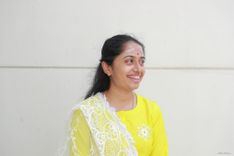For smooth Ad free experience
In this world of fashion and fancy, one design beats all westernized people. The one style that has taken over the entire textile market. The one word uttered by every buyer in the shops. Be it with textiles or painting; handbags or mugs; this one painting, this one printing ruled out all the design and now sits in the homes of all individuals in different forms. It is none other than Kalamkari, pure love!
Textiles of India
There is a famous saying in Tamil “Kai Thozhil ondrai Katrukkol, Kavalai unakkilai otrukol” by a popular poet, Namakal V. Ramalingapillai. It means learning handcraft and you will never regret it as it always gives you happiness and also income, so that you do not need to worry or bother at anytime in your life.
Kalam means pen, kari means work. This ancient work emerged about 3000 years ago in India. Kalamkari is not an art using normal pencils and sketches. This pretty work is done using a bamboo stick or Date palm stick which has a sharp edge at one end to get a perfectly attractive, clear, and intricate design. Another end hooks up with a cotton cloth with thread to make further signature designs. The process is called Kasim which is a mixture of palm jaggery, sugar jaggery, rusted iron and water. The excess paint in the bamboo pen squeezes out gently. Of course, if there is an art, it definitely needs an eraser to alter it. So the craftsmen have cotton aside.
Apart from the art, it is worth noting that the paints that are used are completely organic. Instead of synthetic paints, the artists use vegetable and natural dyes like Alum water for red. Most of the Kalamkari works are bordered either in black or red, universally. This iconography depicts the epics using the tone of color that expresses the mood. For instance, rajas who are violent will be coloured in red. Similarly, there are standard colors for the respective moods and emotions.
Paintings of Kalamkari are found on the archeological sites of mohenjo daro. According to historians, those found fabrics were painted during the Mughal era. The Sultanate of Hyderabad was in love with the art and artists and addressed the kalamkari craftsmen as Qualamkars from which the word kalamkari was born. The Golconda sultanate promoted this art.
This handcrafted glory is also influenced by the surroundings. Chiktrakattas were the reason behind the adoration of the art as they were vagabonds, traveled far away places and showcased the art and their excellent skill in craftsmanship. The purpose of this painting was to spread Hindu mythology from village to village. Cotton cloth played the role of canvas paper. Later, it transformed into canvas painting as well as printing.
The trading in Kalamkari was high and was exported world wide. Development of the designs started then. They took inspiration from the Persians to adorn the motifs of beauty. Srikalahasti and Machilipatnam in Andhra Pradesh are the chief centers for Kalamkari trading. This vibrant art of South India amazingly exists even today after three millennia. The craft grows ultimately wide and still has the same demand for the talk with the art.

You might be interested in reading more from
